In an era where making noise often takes precedence over conveying meaningful insights, we choose a less-travelled road, as Robert Frost would say. While the roar of engines and the thrill of speed may seem at odds with environmental stewardship, a deeper look reveals that motorsport is not only embracing sustainability but also accelerating innovation. In this article, we will explore how motorsport drives sustainability with far-reaching implications for the environment.
The Misconception: A common misconception is that motorsport is inherently detrimental to the environment due to the emissions from the cars themselves (around 1% of CO2 emissions). However, this view overlooks a critical aspect of the environmental impact of sports events: logistics and transportation. In fact, the majority of emissions associated with any major sport, including motorsport, stem from these activities (around 70% of CO2 emissions). Transporting teams, equipment, and spectators to various locations around the world constitutes the bulk of the carbon footprint for these events. This is a challenge not unique to motorsport but common across all major sports and events.

Sustainable Innovation: What sets motorsport apart is its proactive approach to sustainability. The motorsport industry is at the forefront of research and development in driving sustainable innovation. Here’s how:
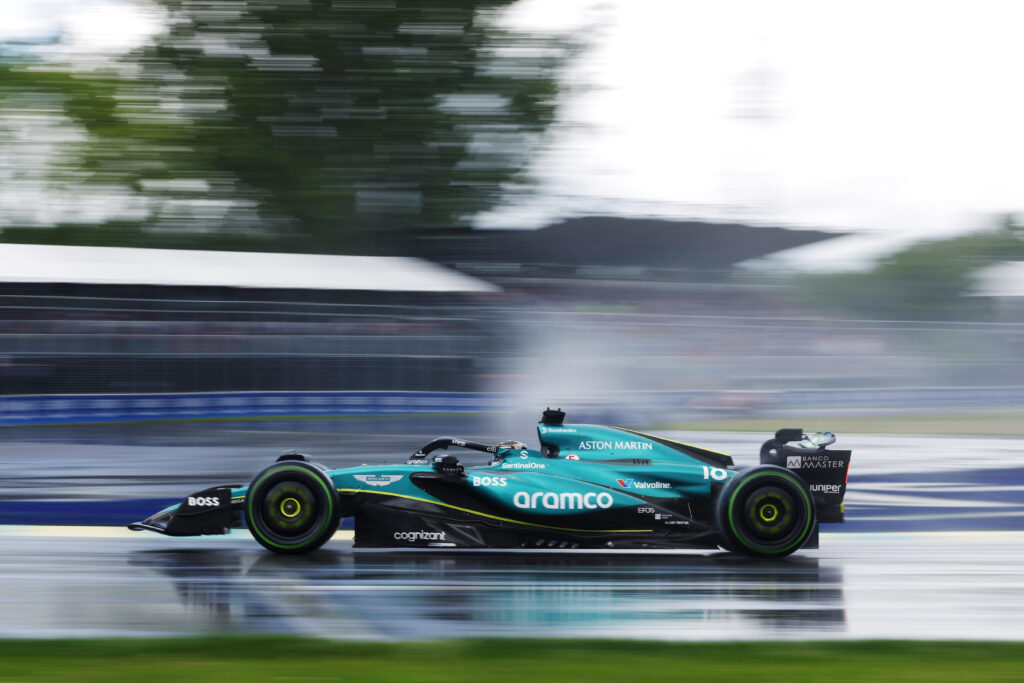
Real-World Impact: The innovations born in the high-pressure environment of motorsport often find their way into everyday vehicles, benefiting millions of drivers worldwide. The rigorous testing and development cycles in motorsport accelerate the adoption of new technologies in the consumer market. This technology transfer means that the sustainability efforts in motorsport have a direct and positive impact on reducing global emissions from road transport.
In conclusion, motorsport is uniquely positioned to lead the charge in sustainability within the sporting world. Its commitment to innovation, the transfer of technology to consumer vehicles, and proactive environmental initiatives make it a powerful platform for companies to showcase their sustainability credentials. By highlighting the broader impact of their sustainability efforts in motorsport, companies can effectively communicate their commitment to environmental stewardship, not just within the sport but in the real world as well. In this way, motorsport is not only a thrilling spectacle but also a catalyst for sustainable change, proving that speed and sustainability can go hand in hand.
In a previous article, we discussed how team culture influences sponsorship acquisition, but in Formula 1, where technology reigns supreme, the importance of drivers' personalities often gets overshadowed. Yet, beyond the track, drivers' engaging personas play a pivotal role in shaping a team's success. While technology is crucial, drivers' charisma captivates audiences and enhances team profiles. In this article, we will explore how F1 drivers' personalities boost sponsorships, fan interest and team image.
Building a Strong Fanbase: In the sport ecosystem, fan engagement is paramount. A driver's personality can serve as a powerful magnet, drawing in supporters from around the globe. Whether it's through their charisma, relatability, or sheer determination, fans often develop a deep emotional connection with their favourite drivers.
Take Lewis Hamilton, for example. With his dynamic personality, Hamilton has transcended the realm of motorsport to become a global icon. His social media presence, fashion collaborations, and advocacy work have endeared him to millions of fans worldwide, many of whom may not have been initially drawn to Formula 1. By cultivating such a devoted fanbase, Hamilton not only boosts his personal brand but also enhances the visibility of his team, the Mercedes-AMG Petronas Formula One Team.

© Lewis Hamilton
Humanizing the Team: Being motorsport often associated with cutting-edge technology and corporate sponsorships, a driver's personality can inject much-needed humanity into the mix. By showcasing their quirks, passions, and vulnerabilities, drivers humanize their teams, making them more relatable to fans.
Daniel Ricciardo is a prime example of a driver who excels in this regard. Known for his infectious smile and exuberant personality, Ricciardo brings a sense of warmth and authenticity to his team.
Whether he's performing his trademark "shoey" celebration or engaging in playful banter with fellow drivers, Ricciardo's charm extends far beyond the confines of the racetrack, endearing him to fans and sponsors alike.

© Getty Images/Red Bull Content Pool
Boosting Sponsorships: In the ultra-competitive world of Formula 1, securing sponsorship contracts is essential to fund team operations and remain competitive on the starting grid. A driver's personality can be a decisive factor in attracting sponsors, as brands seek to align themselves with individuals who resonate with their target audience.
Max Verstappen, with his fearless driving style and outspoken demeanour, has emerged as a magnet for sponsors eager to associate themselves with his winning mentality. From global brands to niche sponsors, Verstappen's appeal extends across a wide spectrum, making him an attractive proposition for any team fortunate enough to have him behind the wheel.
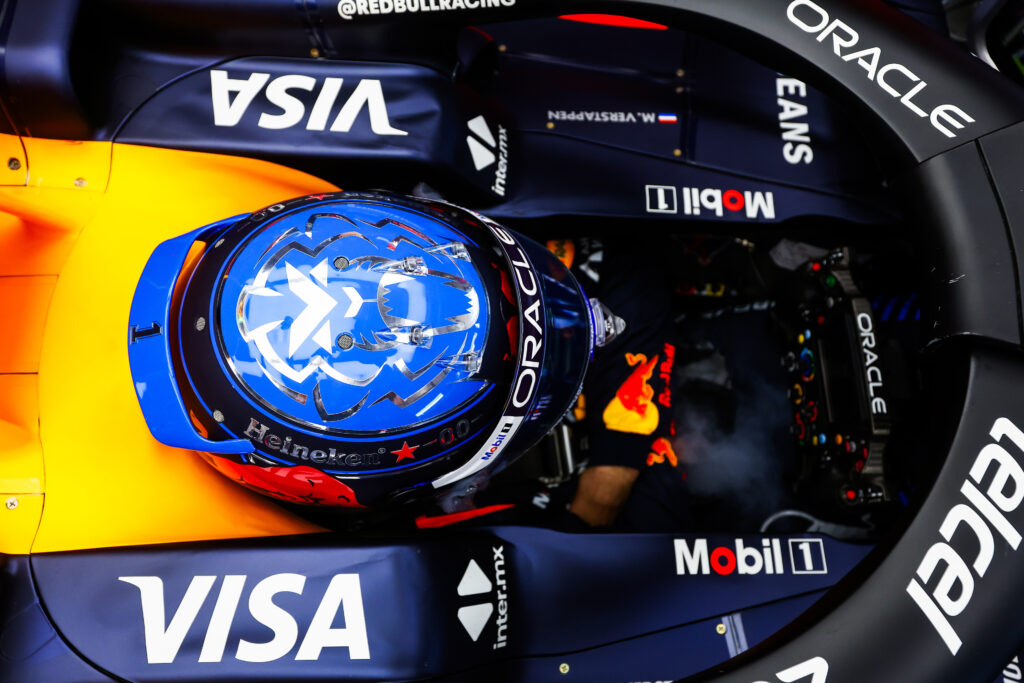
Getty Images / Red Bull Content Pool
Conclusively, although technology and performance reign supreme, it's clear that personality plays a crucial role in shaping a team's success. From building a strong fanbase and humanizing the team to attracting sponsorship opportunities and enhancing team dynamics, an F1 driver's engaging personality can make all the difference, both on and off the track. As the sport continues to evolve, the value of charisma and relatability will remain ever-present, ensuring that the human element remains at the heart of Formula 1's enduring appeal.
In elite sports, the partnerships between brands and teams can be lucrative yet complex affairs. Choosing the right team to sponsor can significantly impact a brand's visibility, reputation, and bottom line. However, the decision to change or stick with a particular team requires careful consideration of various factors. In this article, we delve into the reasons why sponsors shift teams, along with the pros and cons of such a decision.
Enhanced Brand Alignment: One of the primary reasons for considering a change in team sponsorship is to better align the brand with a team that reflects its values, target audience, and marketing objectives. Switching to a team whose ethos resonates more closely with the brand can foster stronger brand-team synergy, resulting in more effective marketing campaigns and increased brand affinity among fans.
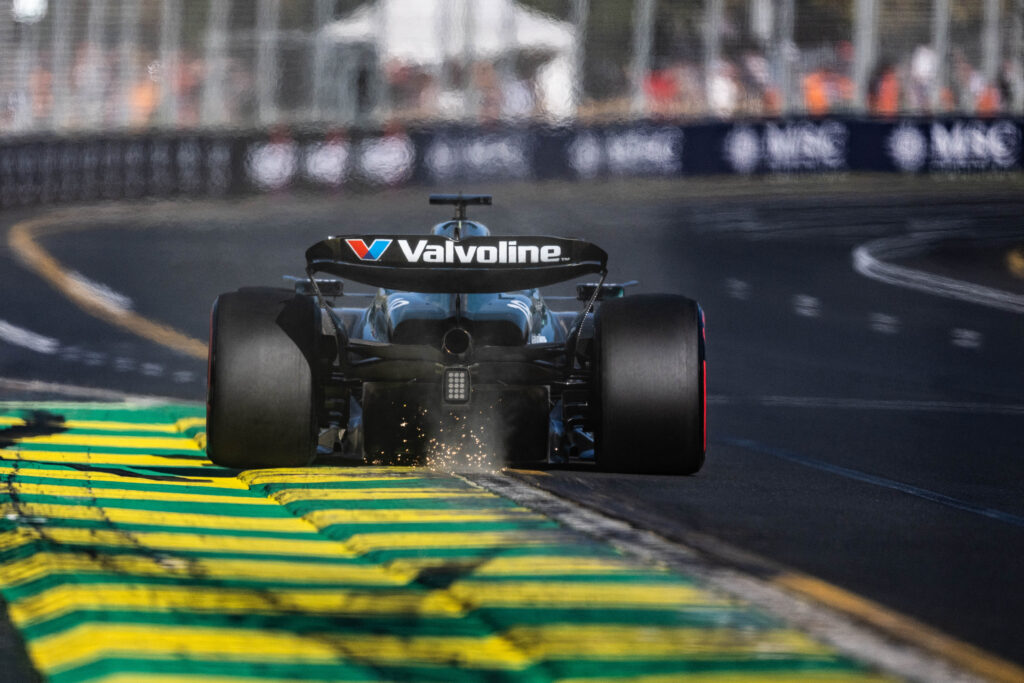
Maximizing Exposure Opportunities: Different teams have varying levels of visibility and influence within the sport. Sponsoring a team with a larger global fanbase or a more prominent position in the championship standings can provide brands with greater exposure opportunities. By aligning with a successful team, brands can leverage the team's success to enhance their brand image and reach a wider audience.
Innovation and Technology Showcase: Motorsport is synonymous with cutting-edge technology and innovation, making it an ideal platform for brands looking to showcase their technological prowess and commitment to advancement. Sponsoring a team known for pushing the boundaries of engineering and performance can enhance a brand's reputation as an industry leader and innovator.

Strategic Partnerships: Changing team sponsorship presents an opportunity for brands to forge new strategic partnerships that offer unique advantages. Collaborating with a different team may open doors to new B2B opportunities, as well as the chance to increase the brand's market share in new regions and with audiences in which that particular team is better positioned than the previous one.
Switching teams offers brands the chance to inject new life into their marketing strategies, providing fresh storytelling angles and increased flexibility to adapt to evolving trends. Aligning with a successful team can offer a competitive advantage and reinforce brand leadership.
However, there are challenges to consider, including the potential loss of established brand identity, backlash from fans of the previous team, and significant financial commitments. Before taking the plunge, brands must carefully weigh these pros and cons to ensure that the benefits outweigh the risks in the dynamic world of sports sponsorship.
In the realm of sports sponsorship, the collaboration between sponsors and sports entities has become an essential aspect, providing financial support and visibility for athletes, teams, and events. Notably, there is a growing emphasis on the union of ethical values and sports sponsorship.
One significant impact of ethical and moral values in sports sponsorship is on the reputation and brand image of sponsors. Companies invest substantial resources in cultivating a positive brand image, and aligning with sports entities that uphold integrity and fairness contributes to this effort. Conversely, association with those engaged in unethical practices can lead to enduring damage, highlighting the delicate balance sponsors must strike in their partnerships. The loyalty of sports fans, known for their passion, is another critical aspect affected by ethical considerations in sponsorship. Sponsors seek to forge a strong connection with these fans, and supporting ethically responsible athletes or teams serves as a catalyst for this relationship. On the flip side, unethical behavior can alienate fans, resulting in repercussions for both the sponsored property and the sponsor.
The loyalty of sports fans, known for their passion, is another critical aspect affected by ethical considerations in sponsorship. Sponsors seek to forge a strong connection with these fans, and supporting ethically responsible athletes or teams serves as a catalyst for this relationship. On the flip side, unethical behavior can alienate fans, resulting in repercussions for both the sponsored property and the sponsor.
Legal and regulatory compliance is an additional dimension in the importance of ethical values in sports sponsorship. Sponsors operate within a framework of obligations, and supporting sports entities adhering to ethical standards ensures compliance, preventing legal issues.
Furthermore, corporate social responsibility (CSR) initiatives tie into this, as sponsors aligning with sports properties that share their CSR goals contribute positively to the community. Navigating this intricate world of sports sponsorship involves strategic maneuvers when ethical lines are crossed. Contracts, with breach of conduct clauses, serve as ethical agreements defining the standards for athletes and teams. Termination of contracts becomes a swift response when deviations, such as doping scandals or match-fixing, occur, reinforcing the commitment to ethical standards. In fact, reputational risk management is an ongoing process for sponsors keen on safeguarding their brand image.
Navigating this intricate world of sports sponsorship involves strategic maneuvers when ethical lines are crossed. Contracts, with breach of conduct clauses, serve as ethical agreements defining the standards for athletes and teams. Termination of contracts becomes a swift response when deviations, such as doping scandals or match-fixing, occur, reinforcing the commitment to ethical standards. In fact, reputational risk management is an ongoing process for sponsors keen on safeguarding their brand image.
Today, in the age of social media, public backlash and consumer perception play a pivotal role, with sponsors strategically cutting ties to protect their brand from negative associations.
In conclusion, ethical values are not mere buzzwords but the bedrock upon which enduring success in sports sponsorship is built. Sponsors increasingly recognize the strategic necessity of committing to ethical and moral standards, understanding that it is not only a moral imperative but essential for sustained positive brand engagement. As the sports industry evolves, the emphasis on ethical considerations is poised to grow, shaping a landscape where integrity, fairness, and respect are paramount.
The news of Lewis Hamilton joining Scuderia Ferrari in 2025 is making headlines; however, many are still wondering if this move makes complete sense. Setting aside the sporting aspect, as time will tell and Sir Lewis' performance will likely be defined by the quality of the machinery provided, it's equally important to focus on the commercial and marketing rationale behind this decision. Imagining F1 drivers as marketing powerhouses is crucial in the context of the sport's increasing commercialization.
In recent years, Formula 1 has emerged as one of the most commercialized sports globally, with teams and drivers seeking ways to capitalize on franchise growth. And even Ferrari aims to explore these avenues.
 Among all Formula 1 drivers, Lewis Hamilton stands out as the first, and perhaps still the only one, to become an icon beyond the racing world. He has participated in fashion shows, ventured into music, and associated himself with Hollywood's elite. When Tommy Hilfiger became a partner of the Mercedes F1 team, there was already a collaboration with Lewis Hamilton. For many other lifestyle partners of the team, the access and affiliation with the seven-time world champion was crucial.
Among all Formula 1 drivers, Lewis Hamilton stands out as the first, and perhaps still the only one, to become an icon beyond the racing world. He has participated in fashion shows, ventured into music, and associated himself with Hollywood's elite. When Tommy Hilfiger became a partner of the Mercedes F1 team, there was already a collaboration with Lewis Hamilton. For many other lifestyle partners of the team, the access and affiliation with the seven-time world champion was crucial.
Hamilton, with his distinctive style and outspoken advocacy for social and environmental issues, has successfully crafted a brand extending beyond the racetrack. This personal brand becomes an asset for the team, drawing attention and interest not only from motorsport enthusiasts but also from a diverse audience.
So, what does this move mean for both Hamilton and Ferrari?
Hamilton, approaching 40 and likely to retire in the next 2-3 years, is understandably considering his post-racing career. Ferrari offers more than Mercedes in this regard. Being a Ferrari ambassador will position him as the representative of the world's most acclaimed brand, opening the major doors in show business and propelling his career beyond the racing world.
On the other hand, Ferrari is expanding its target audience beyond the traditional base, exemplified by the production of its first SUV, the Ferrari Purosangue, following a strategy initially implemented successfully by Lamborghini with the Urus. Ferrari is also striving to grow as a lifestyle and fashion brand. This is evident in the launch of its own clothing and accessory line through its Brand Diversification division.
 Considering these aspects, it's evident that Lewis Hamilton can help the Prancing Horse extend its reach beyond racing and car enthusiasts, engaging with a more diverse and lifestyle-oriented audience.
Considering these aspects, it's evident that Lewis Hamilton can help the Prancing Horse extend its reach beyond racing and car enthusiasts, engaging with a more diverse and lifestyle-oriented audience.
In conclusion, Formula 1 drivers, especially exemplified by figures like Lewis Hamilton, have become instrumental in their teams' marketing strategies. Through personal branding, social media engagement, charitable initiatives, on-track success, and global appeal, drivers serve as powerful ambassadors for sponsors. The symbiotic relationship between drivers and teams, coupled with the global reach of Formula 1, creates a compelling narrative that extends beyond the race circuit, making the sport a thriving marketing ecosystem where drivers play a pivotal role.
We've recently been tasked by a brand to evaluate whether title sponsorships really deliver added value compared to more standard sponsorships and the results have given some clear indications. Do title sponsorships work? Let's look into that.
The main difference between a title sponsorship and a standard sponsorship is naming rights that are included in the first one and thanks to that the sponsor can put his name as an integral part of the team's name. These rights are the ones that are supposed to generate that extra value, however, this is not as straightforward as it might seem. Let's look into the conditions that can make a title sponsorship successful or not.
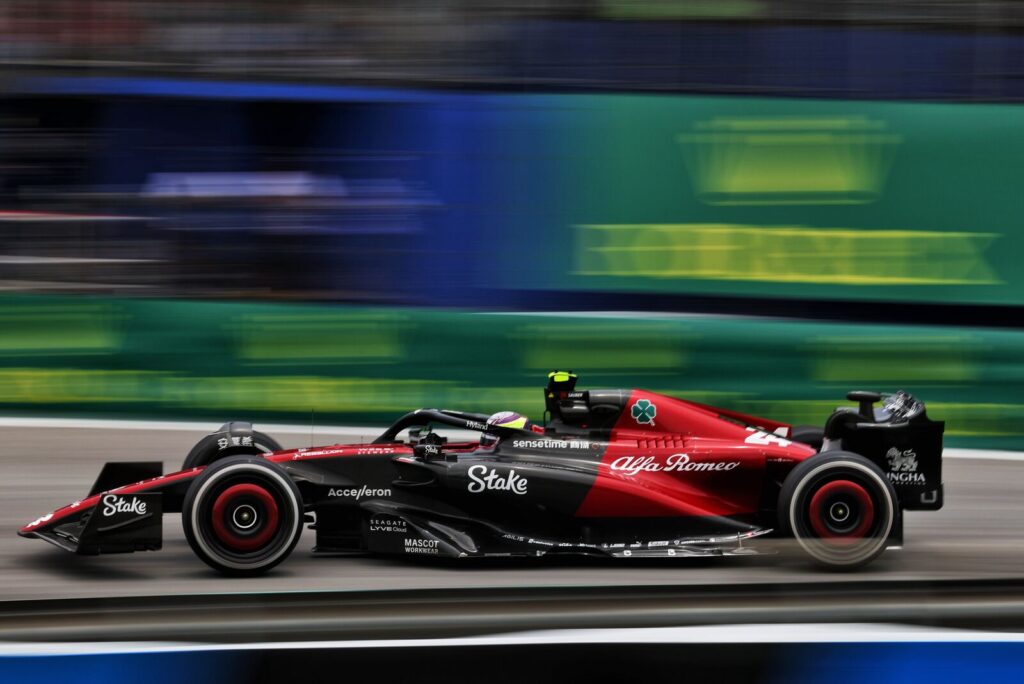
Be the Only Title Sponsorship: Formula 1 has become a highly sought-after sport, with several teams having more than one brand as a title sponsor. As a brand, it is important to ensure that you are the only title sponsor, as the success of a title sponsorship lies in being the sole title sponsor, completely replacing the previous naming.
Less brand equity, the better: Based on our analysis, we found that a title sponsorship tends to be more successful if the team's original name doesn't have a strong brand equity. This is because it's easier for fans to associate and identify the team with your brand's name when there isn't a strong attachment to the old name.
Think long-term: Our data suggests that it may take up to 24 months for a new team name to gain widespread recognition and acceptance among fans. This is influenced by several factors, including the team's history, fan sentiment, and media coverage. Therefore, to achieve the desired outcome, a title sponsorship should run on multi-year agreements.
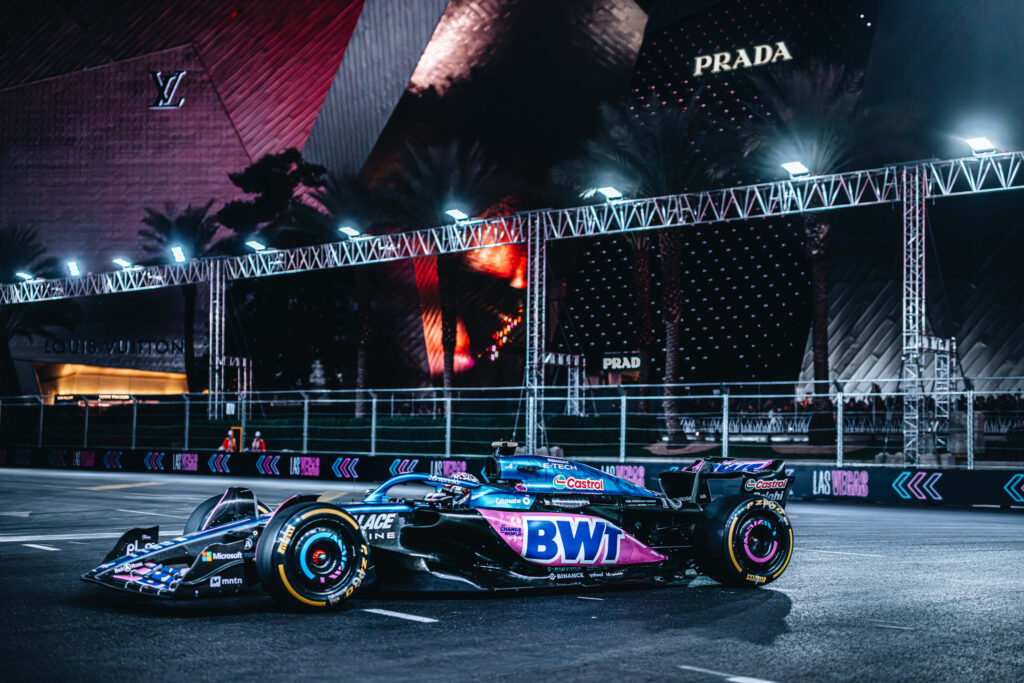
There are also additional factors that contribute to the success of a title sponsorship, which are also shared with more traditional sponsorship agreements. These include genuine integration into the team, authentic storytelling, brand alignment with the team's personality, access to the right assets, and a well-structured activation strategy.
In conclusion, if you are a brand looking to invest in a title sponsorship, it is crucial to prioritize the first three points as they should be the starting point for any discussion.
Today, in the world of sports sponsorship, success is not merely about signing the check but balancing sponsorship and activation budgets. The art lies in allocating resources effectively, ensuring that your brand not only secures a spot on the field but engages with the audience in a meaningful way. In this article, we'll explore the intricacies of determining the optimal proportions for your sports sponsorship fee and activation budgets to achieve a winning formula for brand impact.
Understanding the Core Components: The first step in striking the right balance is to understand the core components of your investment. The sponsorship fee is the upfront cost for associating your brand with a sports entity, while the activation budget is reserved for bringing that association to life through various marketing channels.
Establishing Clear Objectives: Before delving into budget allocation, establish clear objectives for your sports sponsorship. Are you seeking heightened brand visibility, increased audience engagement, or both? Understanding your goals will guide the proportions of your budget allocation, ensuring a tailored approach to meet specific objectives.
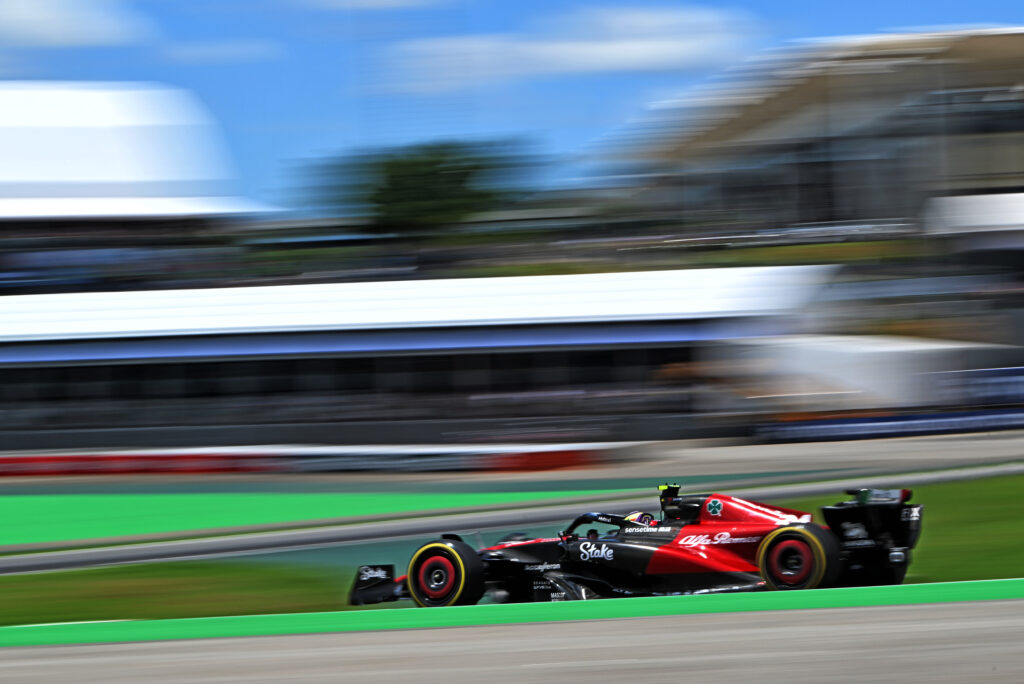
The 70/30 Rule: A common guideline in the industry is the 70/30 rule, allocating 70% of the budget to sponsorship fees and 30% to activation efforts. However, this is not a rigid formula but rather a starting point. Consider the unique characteristics of your sponsorship, industry trends, and the preferences of your target audience to adjust this ratio accordingly.
Tailoring to Your Brand and Audience: Every brand and audience is unique. If your brand thrives on visibility, a more substantial portion of the budget may be directed toward securing prime sponsorship opportunities. Conversely, if engagement and interaction are your key goals, a larger activation budget may be more appropriate for creating memorable experiences.
Strategic Activation Planning: Activation is where the sponsorship truly comes to life. Carefully plan how you will leverage the allocated activation budget across various channels. Social media campaigns, experiential marketing, and content creation are potent tools for creating a buzz around your sponsorship. Tailor your activations to resonate with your target audience and align with the values of the sports entity.
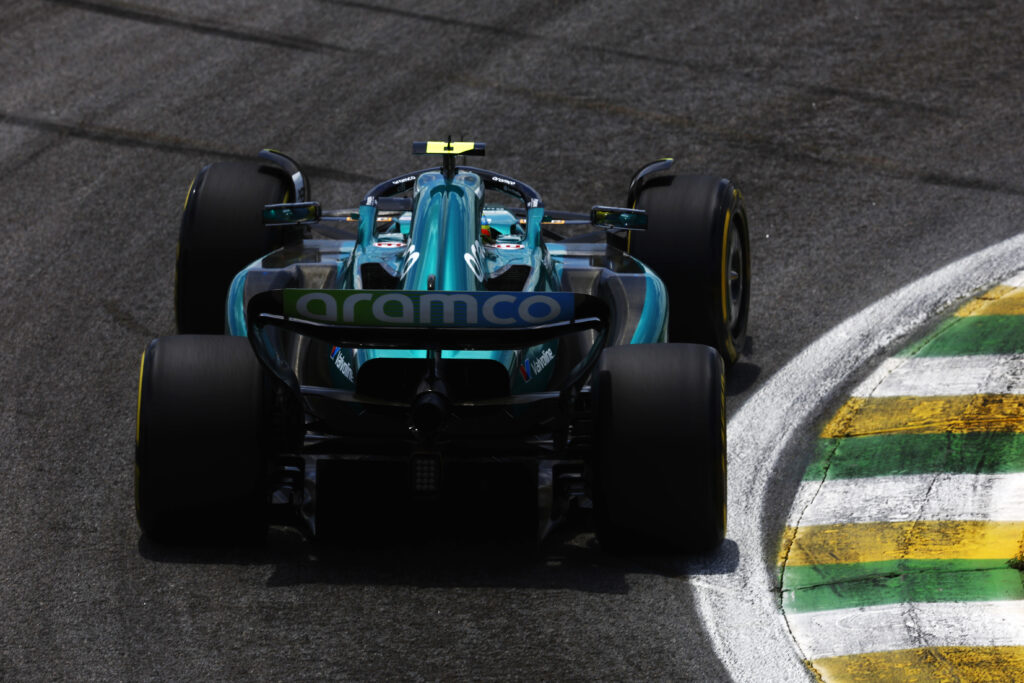
Utilizing Analytics for Informed Decisions: Leverage analytics tools to track the performance of both your sponsorship and activation efforts. Analyzing key performance indicators (KPIs) such as website traffic, social media engagement, and brand sentiment allows you to make data-driven decisions. Use this information to adjust your budget proportions based on what resonates most with your audience.
Adapting to Industry Trends: The sports sponsorship landscape is dynamic, influenced by emerging trends and consumer behaviours. Stay agile and be willing to adapt your budget allocation to align with industry shifts. By keeping an eye on trends, you can position your brand as forward-thinking and relevant within the sports community.
Iterative Refinement for Long-Term Success: Success in sports sponsorship is an ongoing journey. Regularly review and refine your budget allocation strategy. Learn from both successes and setbacks and be prepared to iterate your approach for long-term success in the evolving sports marketing landscape.
Achieving the right proportions for your sports sponsorship fee and activation budgets requires a nuanced approach. By understanding your brand objectives, tailoring your strategy to your unique audience, and staying adaptive to industry trends, you can strike a balance that not only secures your spot on the grid but resonates with fans for lasting brand impact.
In the sports sponsorship ecosystem, companies are constantly seeking innovative ways to connect with their target audiences. One strategy that has proven to be incredibly effective is product/service integration. This approach goes beyond the traditional logo placement and advertising, allowing sponsors to immerse themselves in the sports experience. In this article, we'll delve into why product/service integration is crucial in sports sponsorship and how it can deliver substantial benefits for both brands and sports entities.
Enhanced Brand Visibility: One of the primary reasons why product/service integration is vital in sports sponsorship is the opportunity for enhanced brand visibility. Unlike traditional advertising, integration allows sponsors to become a seamless part of the sports event. Whether it's naming rights for a stadium, branded merchandise, or interactive fan experiences, integration ensures that the brand remains top-of-mind for fans.
Authentic Fan Engagement: Sports fans are a passionate bunch, and they can spot inauthentic sponsorships from a mile away. Product/service integration offers a unique opportunity to authentically engage with fans by seamlessly incorporating the sponsor's offerings into the fan experience. This could include branded concessions, interactive fan zones, or even exclusive merchandise.
By integrating products or services in a way that enhances the fan experience, sponsors can gain the trust and loyalty of sports enthusiasts. This leads to more genuine connections between brands and fans, resulting in increased customer retention and advocacy.
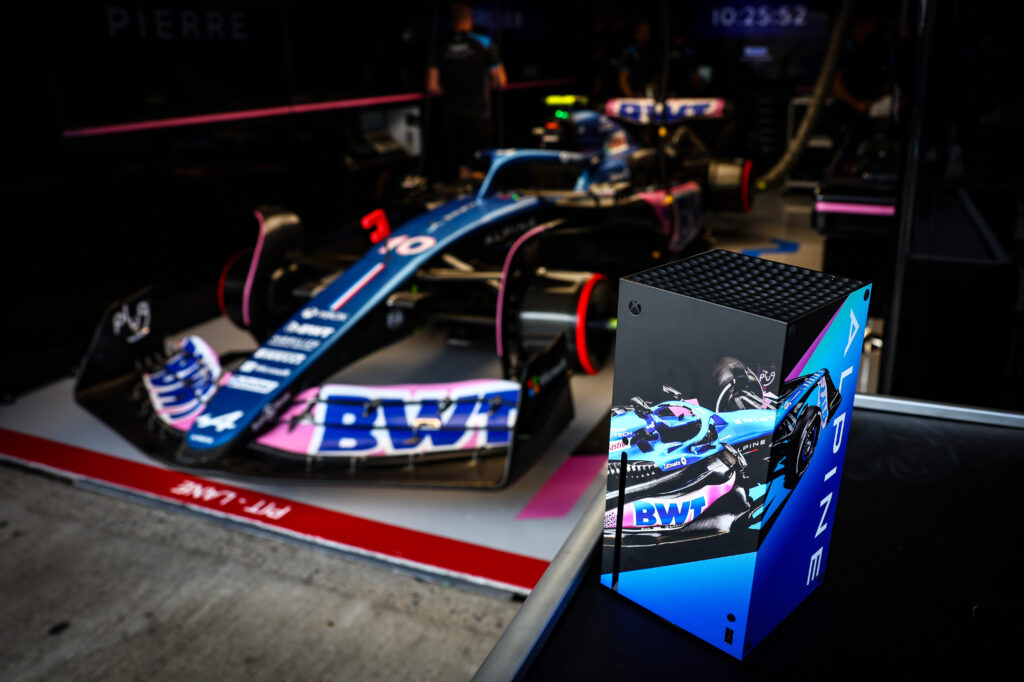 Memorable Experiences: Sports sponsorship is not just about exposure; it's also about creating memorable experiences. Product/service integration allows brands to provide fans with experiences they'll remember long after the final whistle. These experiences can range from VIP access to exclusive events to unique product demonstrations.
Memorable Experiences: Sports sponsorship is not just about exposure; it's also about creating memorable experiences. Product/service integration allows brands to provide fans with experiences they'll remember long after the final whistle. These experiences can range from VIP access to exclusive events to unique product demonstrations.
Data-Driven Insights: In today's digital age, data is king. Integrating products or services into sports sponsorship can provide sponsors with valuable data-driven insights. For example, tracking the usage of a branded mobile app during a sporting event can provide sponsors with detailed information about fan behavior and preferences.
This data can be leveraged to refine marketing strategies, tailor product offerings, and target specific demographics effectively. It can also inform future sponsorship decisions, ensuring that brands get the most out of their investments.
 In the competitive world of sports sponsorship, product/service integration stands out as a crucial strategy for brands looking to make a lasting impact. From enhanced brand visibility to authentic fan engagement, memorable experiences, data-driven insights, and long-term partnerships, the benefits are abundant. By integrating products or services into sports sponsorship, brands can score big and win the hearts of fans around the world. It's not just a sponsorship; it's a winning play.
In the competitive world of sports sponsorship, product/service integration stands out as a crucial strategy for brands looking to make a lasting impact. From enhanced brand visibility to authentic fan engagement, memorable experiences, data-driven insights, and long-term partnerships, the benefits are abundant. By integrating products or services into sports sponsorship, brands can score big and win the hearts of fans around the world. It's not just a sponsorship; it's a winning play.
In the ever-evolving landscape of sports sponsorship, one question looms large: Is branding still essential in this dynamic and highly competitive arena? Traditionally, branding has played a pivotal role in establishing a sponsor's identity and promoting their products or services. However, as the sports sponsorship industry continues to undergo profound transformations, it's worth examining whether branding remains a fundamental asset or if its significance is diminishing.
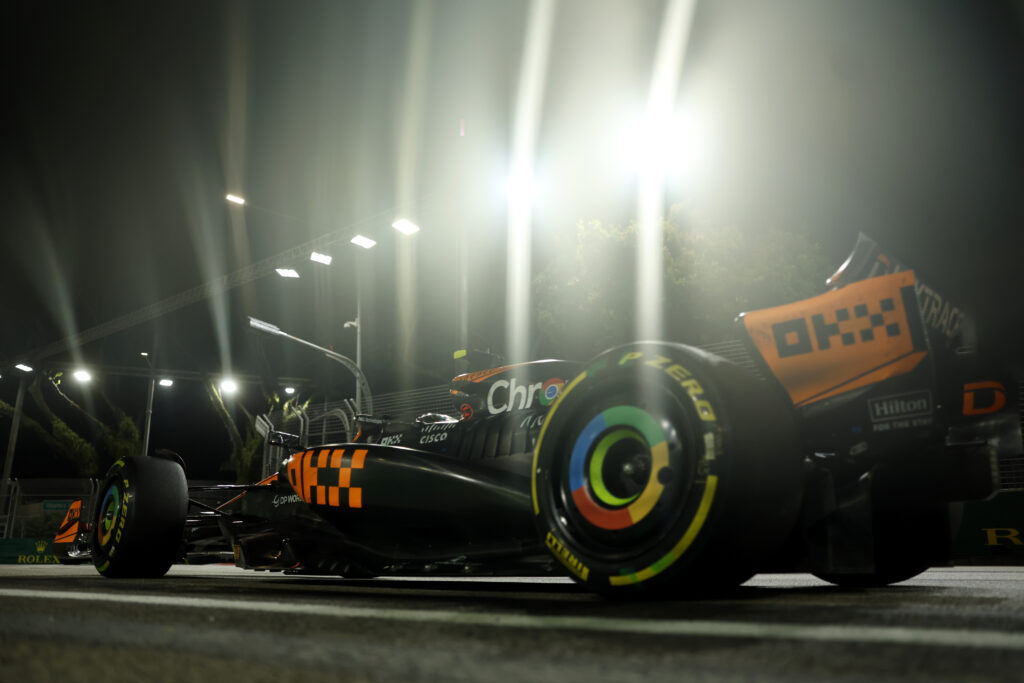
Historically, branding in sports sponsorship has been synonymous with visibility. Sponsors emblazoned their logos on jerseys, stadium signage, and in broadcasts, ensuring their name was seen by millions of fans. This high visibility translated into brand recognition, association, and recall. A strong brand presence reinforced the sponsor's message and created a sense of legitimacy and trust.
Moreover, branding in sports sponsorship helped sponsors align themselves with the values and ethos of the sporting entity they supported. For instance, brands sponsoring an eco-conscious sports team could portray themselves as environmentally friendly. This alignment fostered a positive brand image, leading to increased consumer loyalty and trust.

However, the landscape of sports sponsorship is undergoing profound changes. Traditional methods of branding are still effective but are no longer the sole driver of success. Several factors have contributed to this shift:
The Rise of Digital and Social Media: In today's digital age, fans consume sports content across various platforms, from streaming services to social media. Sponsors are recognizing the value of engaging fans on these platforms, shifting their focus from static logos to dynamic, interactive content. This evolution highlights the importance of storytelling, as sponsors strive to create narratives that resonate with their audience.
Data-Driven Sponsorships: Sponsors now have access to advanced data analytics, enabling them to make more informed decisions about their investments. They can measure ROI, track consumer sentiment, and adjust their strategies accordingly. This data-driven approach allows sponsors to fine-tune their branding efforts, ensuring they align with their target audience's preferences.
Purpose-Driven Sponsorships: Modern consumers are increasingly drawn to brands with a clear social or environmental purpose. Sponsors are leveraging sports sponsorship to communicate their commitment to social responsibility, sustainability, and inclusivity. In such cases, branding is more about aligning values than simply promoting a logo.

In this changing landscape, branding in sports sponsorship has evolved from mere visibility to a more strategic, multifaceted approach. It's not enough for sponsors to plaster their logos everywhere; they must tell compelling stories, connect with fans on a personal level, and demonstrate a genuine commitment to shared values.
Branding remains essential, but its role has expanded to encompass storytelling, digital engagement, and purpose-driven marketing. It's about creating a meaningful connection with fans, not just displaying a logo on a jersey.
In conclusion, branding is still an essential asset in sports sponsorship, but its role and significance have evolved. Traditional branding methods continue to offer value, but in the modern sports sponsorship landscape, sponsors must adapt to new trends, focusing on digital engagement, data-driven strategies, and purpose-driven initiatives. The future of branding in sports sponsorship lies in its ability to connect with fans on a deeper level and align with the values and aspirations of both the sporting entity and the audience. In this new paradigm, branding remains a critical asset, but its execution has changed dramatically to meet the demands of today's sports-savvy consumers.
In the fast-paced world of sports sponsorship, making the right decisions can be the difference between a slam dunk success and a costly fumble. One of the most crucial decisions that brands, athletes, and sports organizations must make is determining the ideal duration of a sports sponsorship deal. In this article, we'll explore the factors that influence the sponsorship optimal length, helping you make informed decisions to maximize your ROI and exposure.
The Dynamics of Sports Sponsorship: Sports sponsorship is a powerful marketing tool that allows brands to connect with their target audience on an emotional level. It's about aligning your brand with the values and passion of sports fans. But, how long should this alignment last?
1. Short-term vs. Long-term Goals: The ideal duration of a sports sponsorship deal often hinges on your marketing objectives. Short-term goals, like promoting a specific product launch, may benefit from shorter agreements, typically ranging from one to two years. Conversely, if your goal is to establish a lasting presence and brand association within a particular sport, a longer-term deal, such as five to ten years, might be more appropriate.
2. Budget Considerations: Your available budget plays a significant role in determining sponsorship duration. Short-term deals are generally more cost-effective upfront, making them suitable for smaller businesses or those testing the waters. On the other hand, long-term deals may require a more substantial financial commitment but can lead to increased brand equity and recognition over time.
3. Market Dynamics: The competitive landscape in your industry and sport can influence your sponsorship deal's duration. In a highly competitive environment, a long-term deal may offer more stability and exclusivity, ensuring your brand remains front and center. In contrast, less competitive markets may benefit from shorter-term agreements, providing flexibility to adapt to changing circumstances.
4. Athlete and Team Dynamics: The popularity and performance of the athlete or team you're sponsoring can significantly impact the ideal sponsorship duration. If you're aligning your brand with a rising star, a short-term deal might be suitable to test the waters. For established athletes or teams, a more extended partnership can help build a deeper connection with fans.
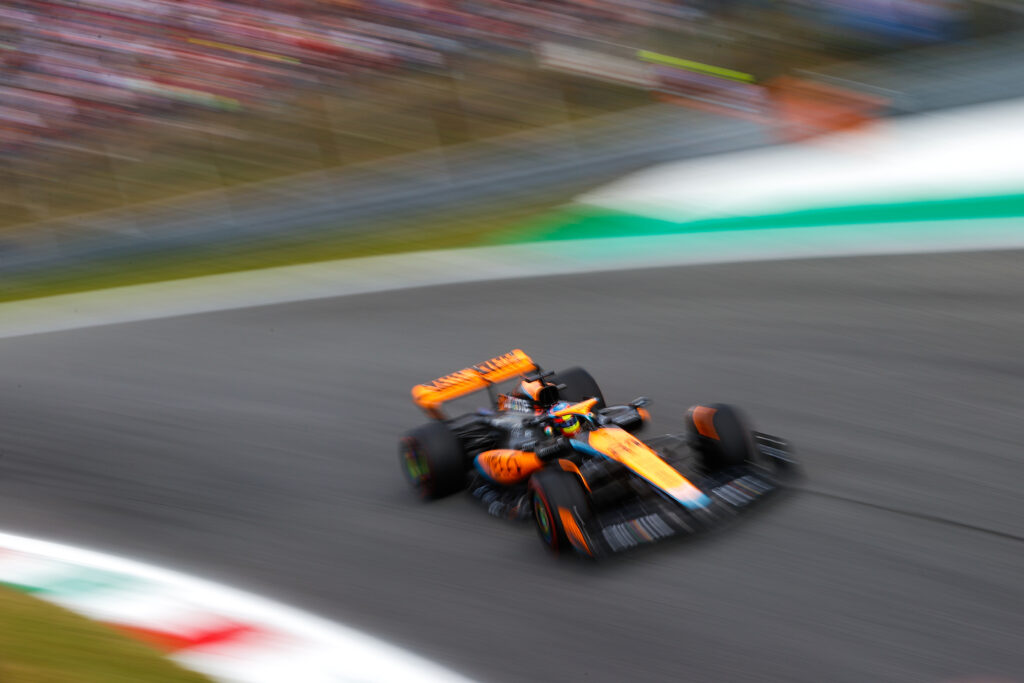
5. Sport Seasonality: Consider the seasonality of the sport when determining the duration of your sponsorship. Some sports have year-round events, while others have distinct seasons. Tailoring the agreement to align with the sport's schedule can help maximize exposure during critical periods.
6. Evolving Marketing Strategies: In today's digital age, marketing strategies are constantly evolving. Brands are increasingly turning to digital and social media to engage with fans. Short-term deals may allow you to adapt your strategy more quickly to changing trends, while long-term deals may require flexibility clauses to ensure you stay ahead of the curve.
7. Brand Growth Trajectory: Assess your brand's growth trajectory when deciding on sponsorship duration. If your brand is rapidly expanding, a shorter-term deal can help maintain flexibility. Conversely, established brands looking for sustained, long-term growth may find that multi-year partnerships align more closely with their goals.
The ideal duration for a sports sponsorship deal is a complex decision that depends on various factors, including your goals, budget, market dynamics, athlete/team dynamics, sport seasonality, evolving marketing strategies, and your brand's growth trajectory. There is no one-size-fits-all answer, but by carefully considering these factors, you can make an informed decision that will maximize your ROI and exposure.
In today's highly competitive sports sponsorship landscape, staying agile and adaptable is key. Whether you opt for a short-term or long-term deal, monitoring performance, and being open to adjustments is essential to ensuring your sponsorship investment yields the desired results. Remember, the ideal duration may evolve over time as your brand and the sports landscape change, so stay vigilant and ready to pivot when necessary.